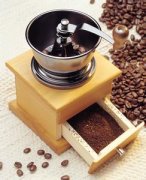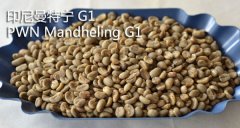Roasting knowledge of coffee beans
The process ends when the beans are dark brown. In many countries, baking ends when the beans are light brown, but all these curbs make a choice.
During baking, beans lose about 18-22% of their weight, which is actually due to many things: water is evaporated, sugar is caramelized, tannins and fat are cut. One of the main indicators of baking (aspect) is that beans should be baked the same on the inside as on the outside. In the baking process, the volume of beans can increase by up to 60%, which is greatly reduced by specific gravity. The coffee essential oil in the beans runs to the profile, showing the fragrant characteristics (developinganaromaticelement). Coffee (coffeone) contains more than 600 chemical ingredients, giving the coffee a charming flavor. In any case, baking "push" too much in order to increase the aroma, as this may volatilize many components in the coffee and run the risk of reducing the aroma.
Water 12%, nitrogen 12%, fat 12%, sugar and dextrin (dextrine) 10%, other non-nitrogen substances 18%, dust 4%, tannic acid 6.7%, caffeine 1.2%, coffee essential oil 0.1%.
Cooling: once the beans are separated from the roaster, they must be cooled immediately so as not to cause the beans to roast deeper than they have reached due to the self-baking effect. There are three ways to cool beans:
3) cooling with cooled air
1) Water cooling: spray water on hot beans that have just been baked to cool them. Because coffee absorbs water easily, this process significantly increases the proportion of beans.
2) cooling with popular air
Important Notice :
前街咖啡 FrontStreet Coffee has moved to new addredd:
FrontStreet Coffee Address: 315,Donghua East Road,GuangZhou
Tel:020 38364473
- Prev

How can you keep your favorite beans?
The storage of coffee beans has a direct impact on the quality of coffee beans, especially for coffee beginners, how to keep your favorite beans, here are some ways to keep coffee beans.
- Next

Manning
Mandenin is not the name of the producing area, the place name, the port name, nor the name of the coffee breed. The origin of its name is actually a phonetic error of the Mandaining mandheling people in Indonesia.
Related
- Guji coffee producing area of Guji, Ethiopia: Humbela, Shakiso, Wulaga
- What is the most expensive variety of Qiloso in BOP multi-variety group?
- How to store the coffee beans bought home?
- Why are Yemeni coffee beans so rare now?
- Ethiopian Sidamo all Red Fruit Sun Sun Santa Vini Coffee beans
- SOE is mostly sour? What does it mean? Is it a single bean? what's the difference between it and Italian blending?
- Is Italian coffee beans suitable for making hand-brewed coffee?
- How to choose coffee beans when making cold coffee? What kind of coffee beans are suitable for making cold coffee?
- Just entered the pit to make coffee, what kind of coffee beans should be chosen?
- Can only Japan buy real Blue Mountain Coffee? What are authentic Jamaican Blue Mountain coffee beans?

